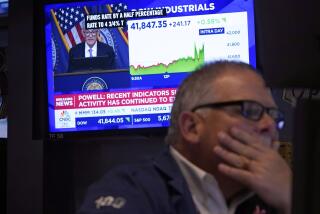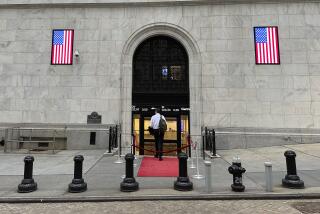NYSE Raises Circuit-Breaker Triggers
The New York Stock Exchange, in its quarterly adjustment of the so-called circuit-breakers, on Thursday reset the level for a trading halt in U.S. equity markets at a drop of 900 points, up from 800 points last quarter.
The changes will take effect Monday, the first trading day of 1999.
A 900-point drop in the Dow industrials will halt trading for one hour if the decline occurs before 2 p.m. EST, for 30 minutes if the drop happens between 2 p.m. and 2:30 p.m. and have no effect if it happens between 2:30 p.m. and 4 p.m.
An 1,800-point drop will halt trading for two hours if the decline occurs before 1 p.m.; for one hour if it falls between 1 p.m. and 2 p.m.; and for the remainder of the day if it occurs between 2 p.m. and 4 p.m.
A 2,700-point drop will halt trading for the remainder of the day regardless of when the decline occurs.
The previous triggers were 800, 1,600 and 2,350 points.
The Big Board published the 10%, 20% and 30% decline levels that will trigger the new trading halts after Thursday’s trading, which marked the end of the fourth quarter.
Point levels are set quarterly by using the average closing level of the Dow industrials for the previous month, rounded to the nearest 50 points. The percentage levels were first implemented in April and are adjusted Jan. 1, April 1, July 1 and Oct. 1.
More to Read
Inside the business of entertainment
The Wide Shot brings you news, analysis and insights on everything from streaming wars to production — and what it all means for the future.
You may occasionally receive promotional content from the Los Angeles Times.










